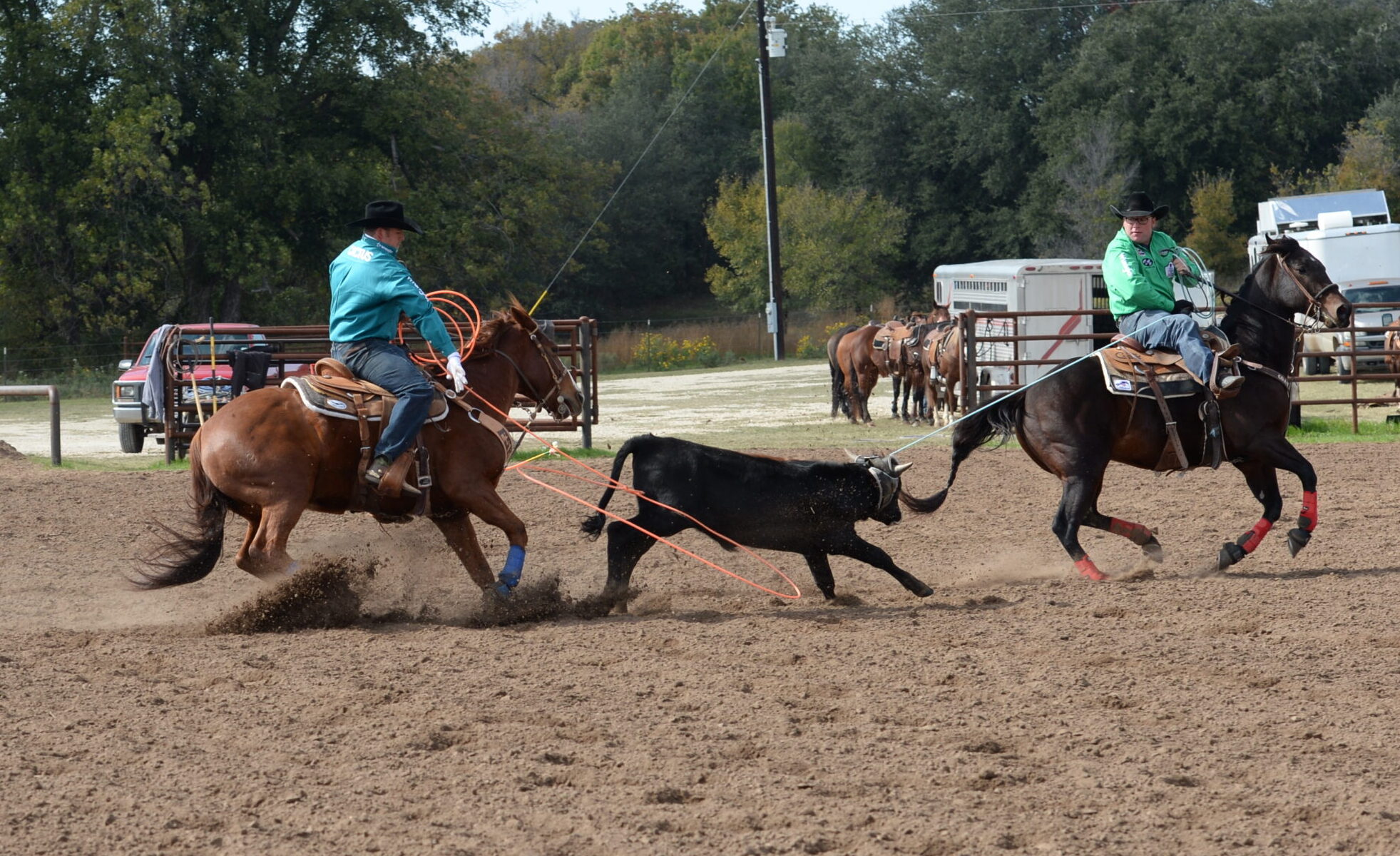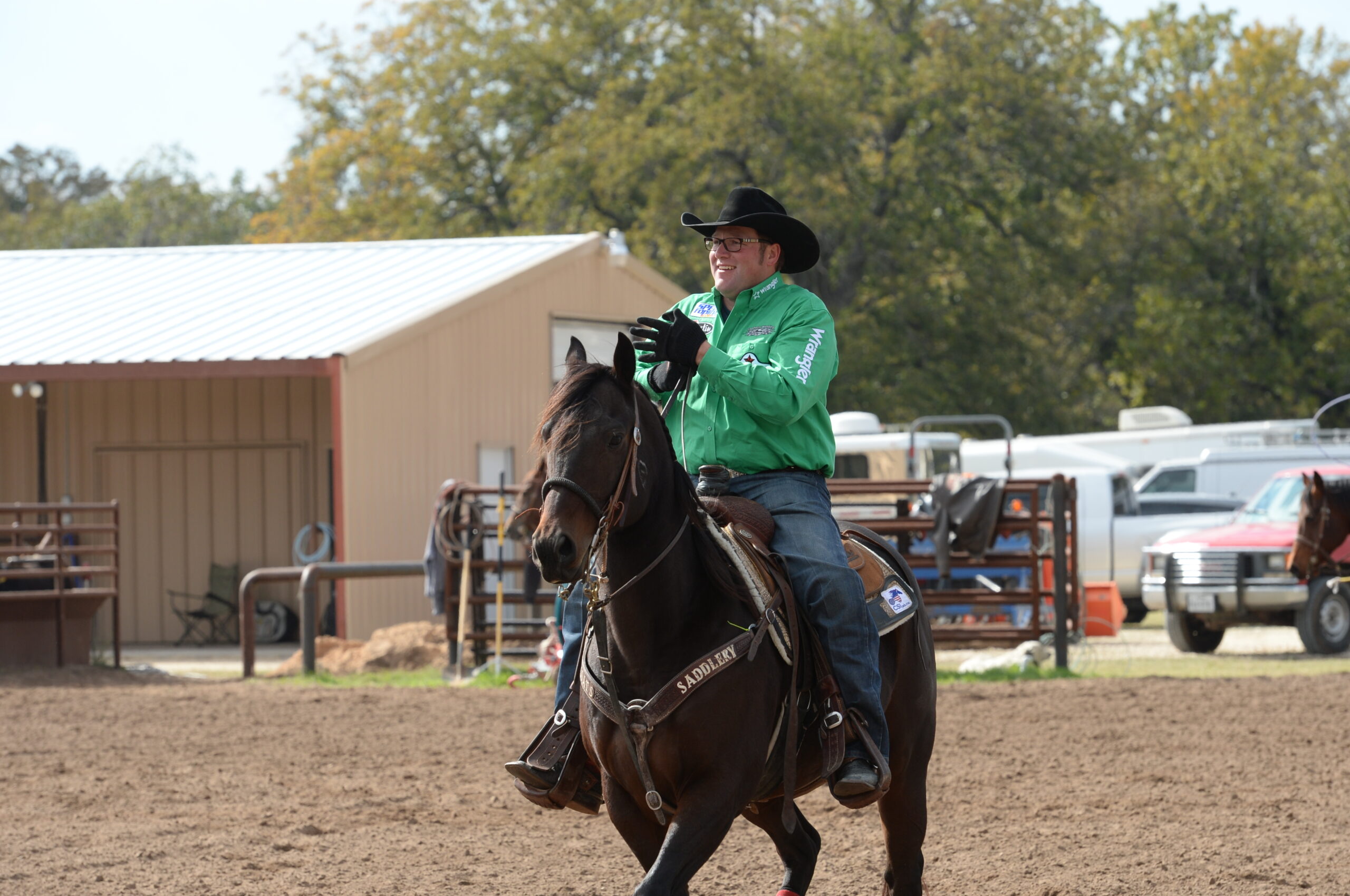As headers, we start the job and we finish it. We nod, we have to get a good start, set the steer up as best we can for our partner, set the corner really well, pull the steer to keep him opened up and then finish. As a header, you have so much responsibility, but there are so many opportunities to impact the run in a positive way.
You can shave off tenths with your catch, setting the steer up and allowing your partner to throw faster. That’s how you go make the good, fast, solid consistent runs in the middle of the arena.
You see teams that are able to run steers farther and still be faster than other teams in which the header ropes as soon as the neck rope pulled off. The two things a guy has to learn as a header is to use your horse and your partner to make the run. Use your horse to go set the table, get the steer on the end of it, legal and ready to be heeled so he is heeled faster—as opposed to letting your roping do all that.
The trick to heading is not how fast you get it on one, but how fast your heeler can catch. I just want to set the run up for my partner.
1. When I started getting some horses with some moves, I had to learn to ride my horse across the line. One thing I had to work on was getting my tip on my target off my first swing. I needed to square myself up, get my left hand down and not use the bridle reins for balance. I wanted to drive and get some run out of my horse across the line.
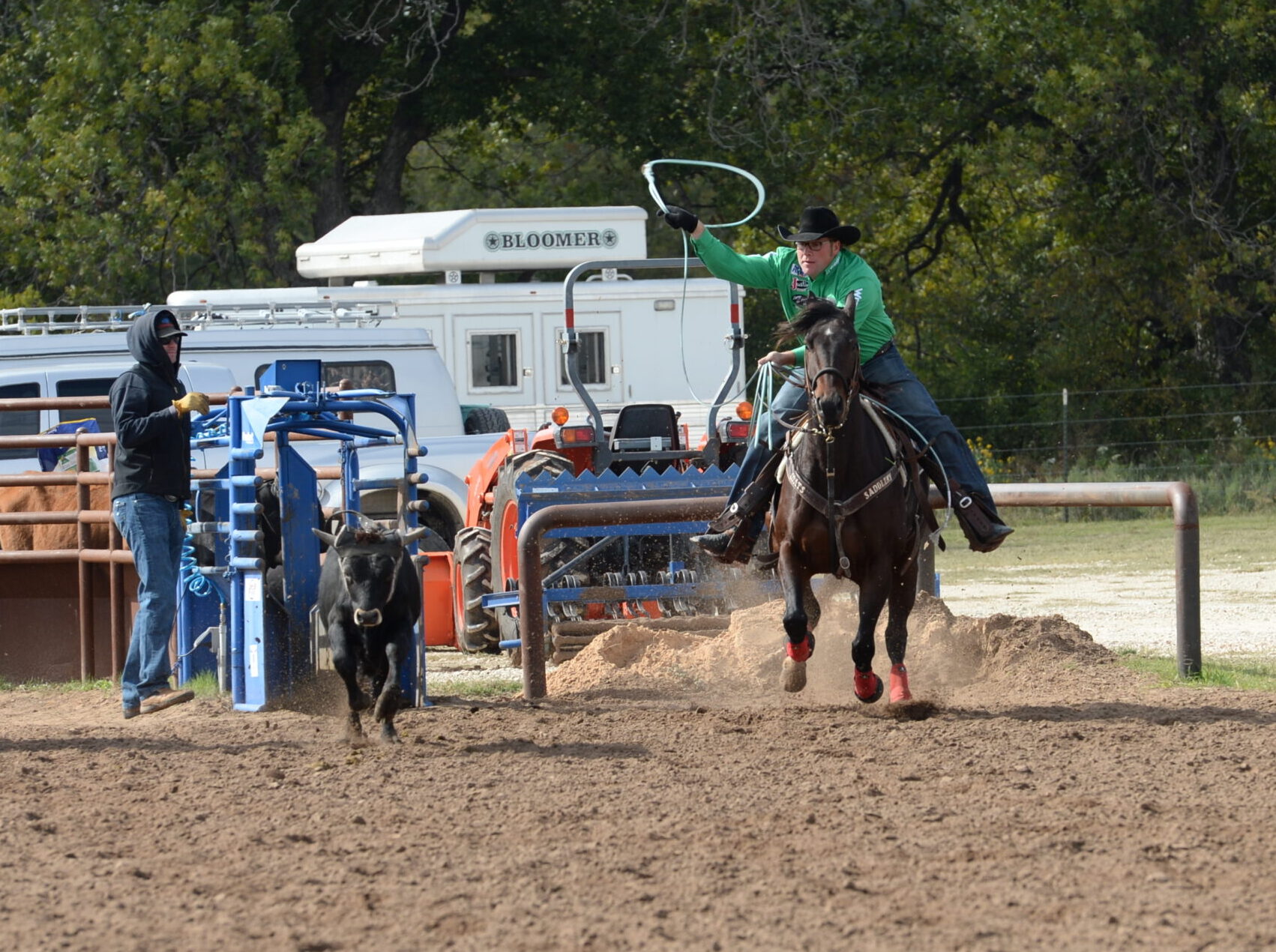
It’s so crucial to have your swing going at the target, driving your horse toward the cow and establishing your lane as you leave the box. I want my right stirrup going toward his left horn.
When I start my horse, if I stay in my lane it helps me set up my throw. It helps cover the left horn for me and set the corner. You’ve got to have forward momentum and good angles with your rope and horse to set the corner properly. As soon as I leave the back of the box, I’m square in my saddle, with my weight on the balls of my feet, and I can use my legs to direct the horse to the left or right and have my hand down toward the cow and my tip on my target. As soon as I get to the steer, I can catch.
2. Next, I want my horse’s shoulders and the steer’s shoulders to be parallel until I get control of the steer. Right here, I’m getting my slack and my horse is square. I’m about to start moving him up and away, taking control of the steer’s head. I’m picking up on the bridle reins, putting my right leg in him and about to open up my left leg so the horse will step away from the steer—but remain going forward. What I’m trying to do is take my horse up and over so I can have more leverage on the steer’s head. The ultimate goal of the corner is to get control of the steer’s head and his shoulders. When you have that, you can take him anywhere you want to. But if you don’t make that transition smooth, you lose control of the cow.
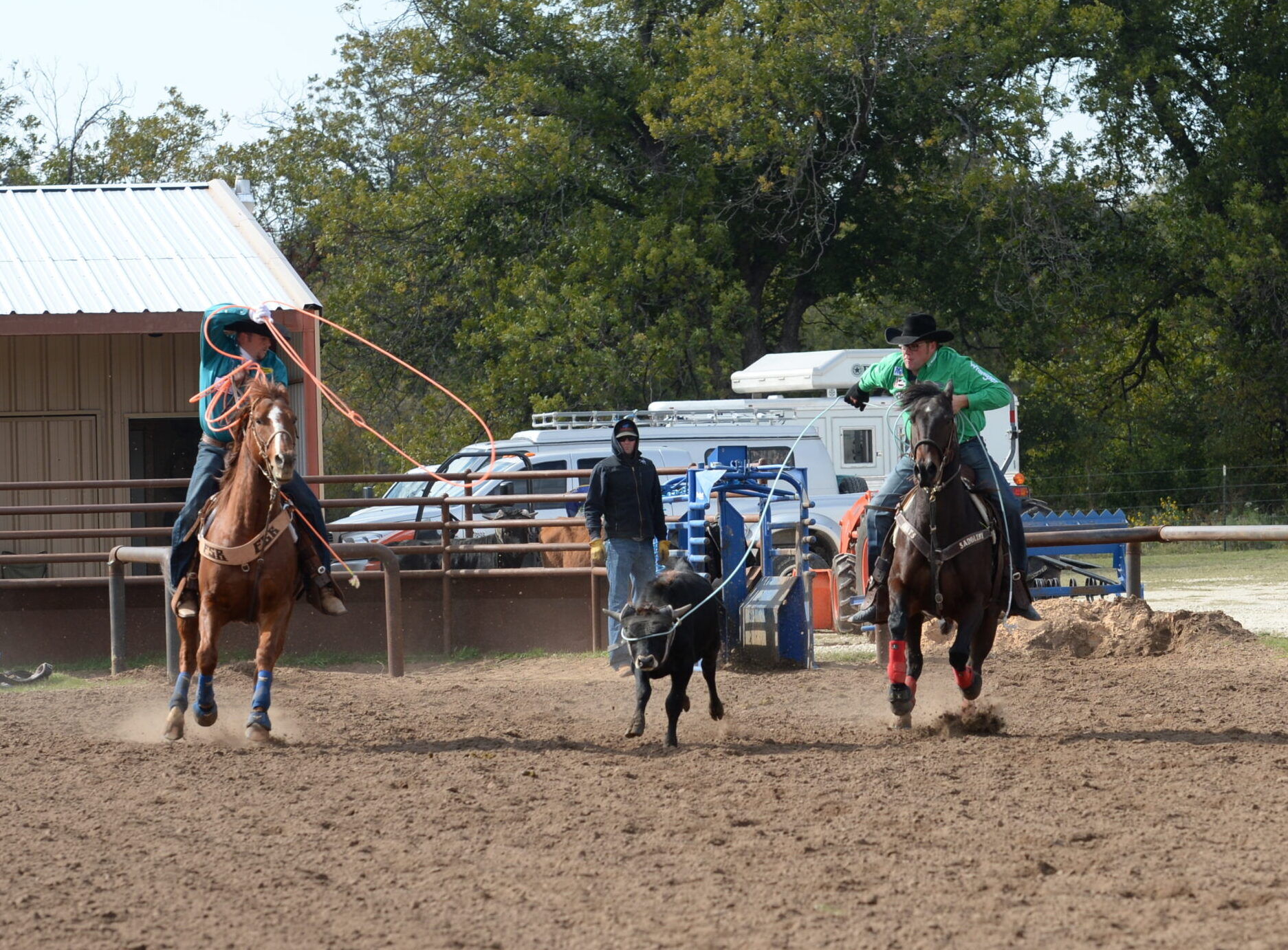
3. Now I’ve got my horse up and away from the cow and I’m just leading him around the corner. I’ve got control of his head and I’m just about to get control of his shoulders. The key in the corner is establishing control of the steer’s front half so you can control his back half. I still have my horse’s shoulders up.
4. Now, I’ve got the steer’s head and shoulders and I can control his hips as I’m coming across the arena. Here’s where I can set my horse’s hind leg in the ground and start pulling. I want to work him not only across the arena, but back up it, too—keeping the steer in the left lead and pulling his head back across his body a little bit. I want to open that steer up.
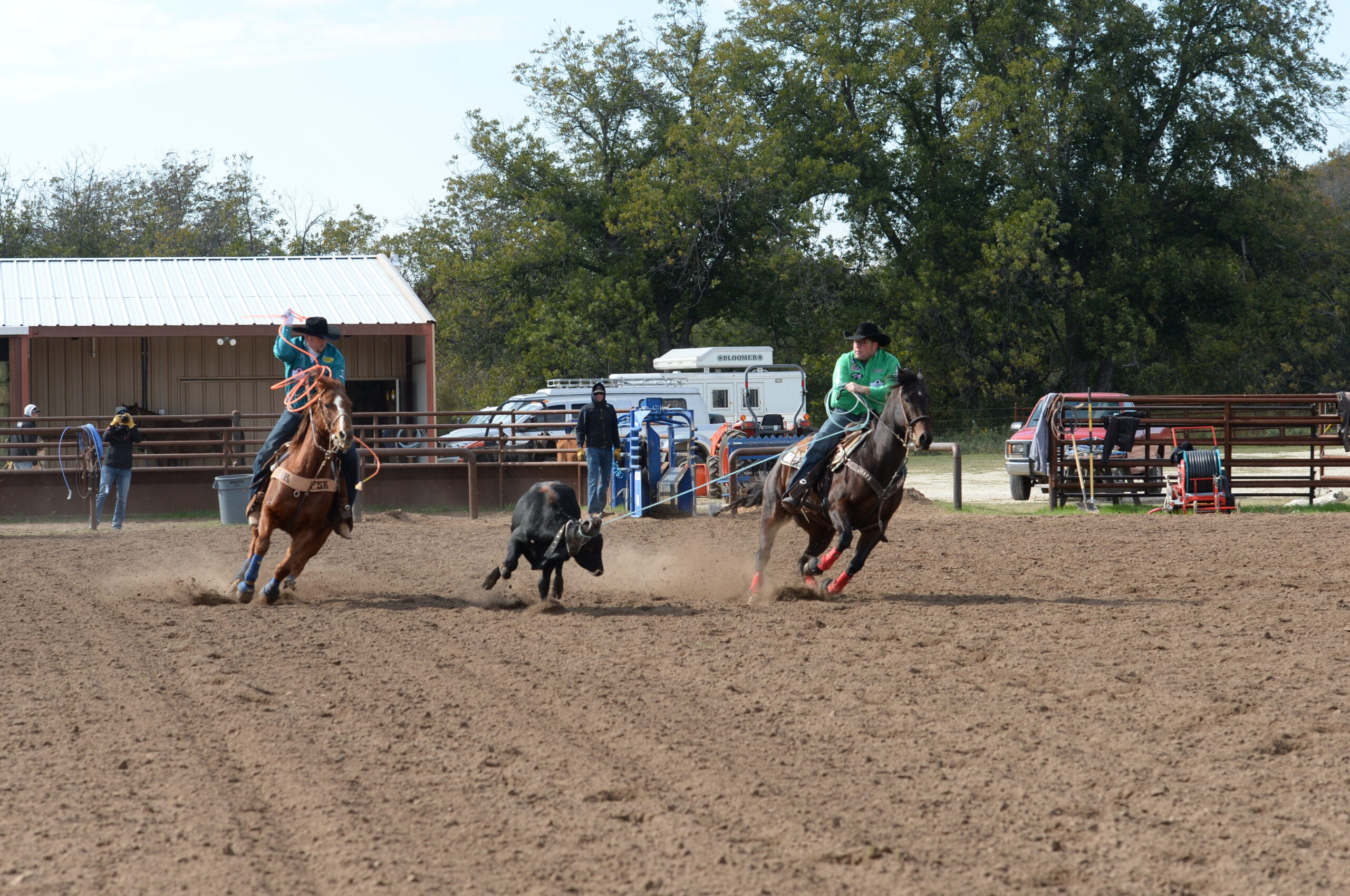
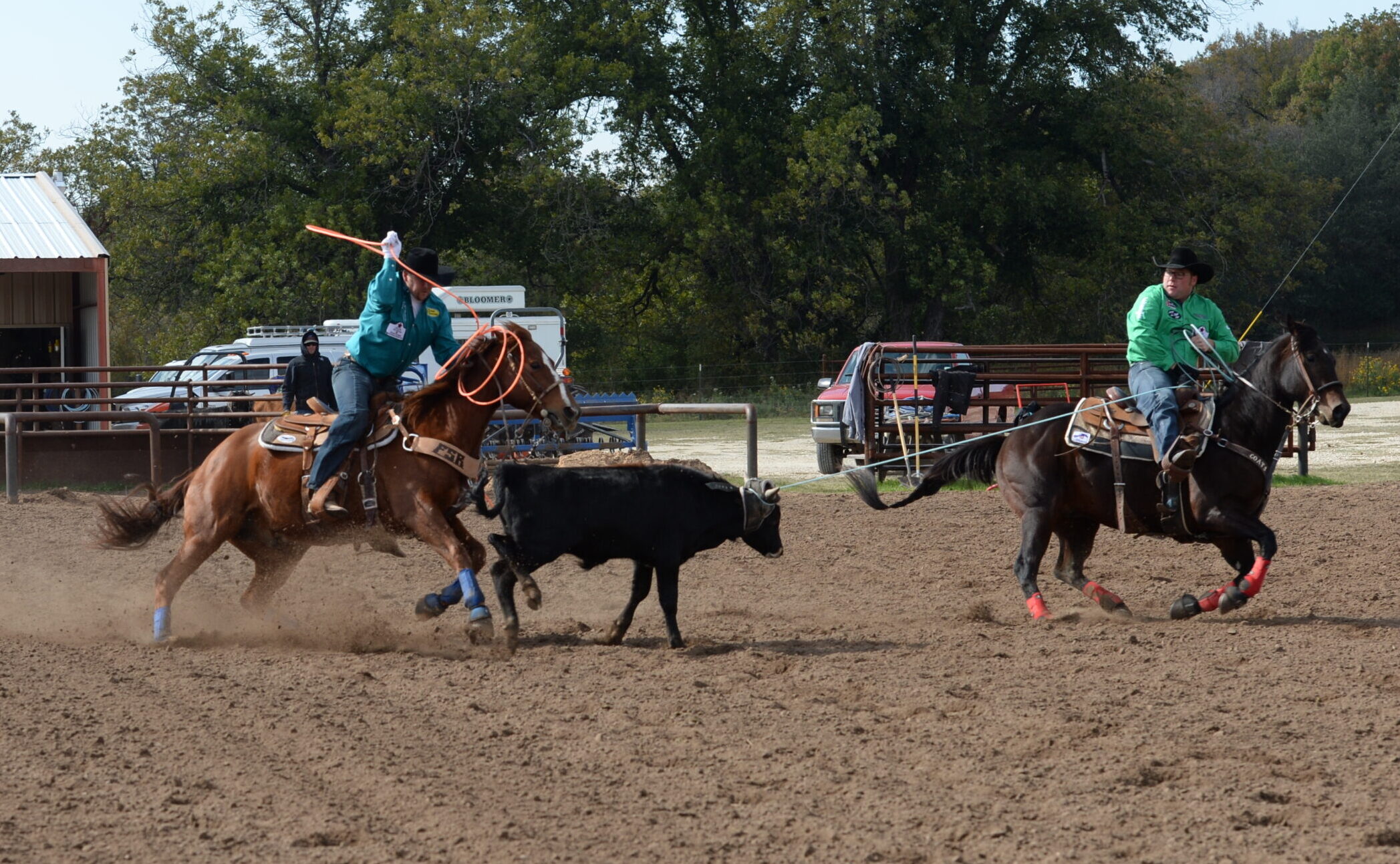
5. Because I’m pulling the steer’s head back to the left across his body, that’s got his front right leg reaching forward—giving my partner that much more room to put his rope down. Of course, Jake doesn’t require much room to catch two feet, but it’s always nice to give him a big window to put his rope down. I’ve kept my horse framed up the whole time through the transition. His nose is back to the inside and his ribs are rolled up to the left. I’m coming across the arena, but also back. It’s not a 90-degree turn, it’s closer to a 60-degree turn, where I maintain control of the steer’s head, keeping him opened up and set up for a great finish.
